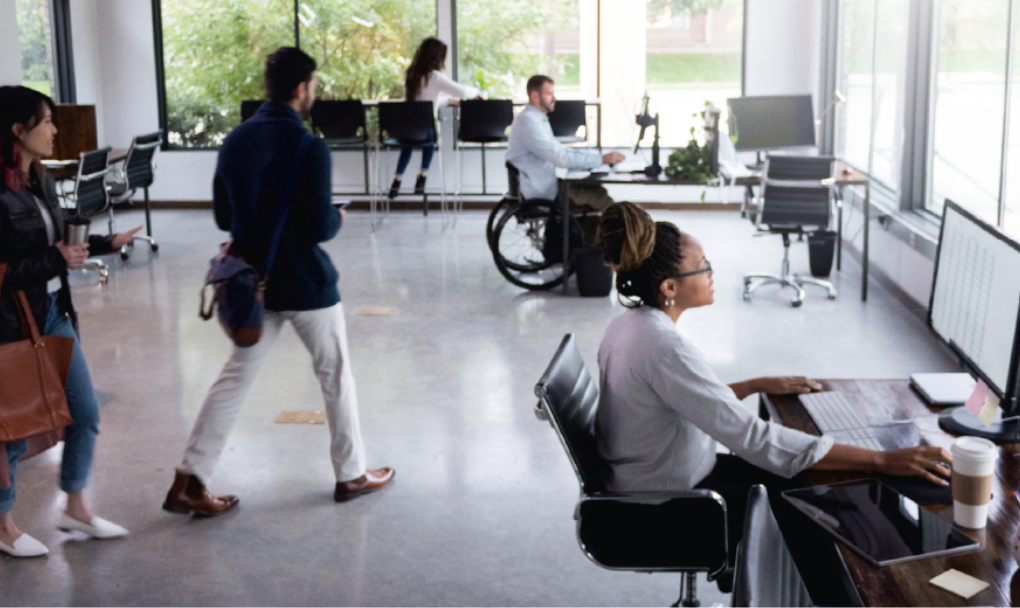Chaired by Mark Catchlove, of MillerKnoll, one of the largest and most influential modern design companies in the world, this FIS design trends round table discussion tried to pin down the future of the offi ce and how it must evolve to support all workers.
Setting the scene, Mark spoke about the growth of workplace strategy and consultancy, which comes about because clients are struggling to understand what they need to provide.
What is abundantly clear is the mixed level of the return to the office as employers and employees all try to work out what they want from their workspace to support them, while providing the fl exibility they have become accustomed to after working from home for so long.
As many people have returned to the office full time, some are finding it’s not for them anymore. This is why the term, ‘hybrid working’ is one we have quickly become accustomed to and it is gaining momentum as workers demand more choice in when and where they work.
Employers and building owners are working much harder to provide truly inclusive working environments, taking into consideration physical and mental differences, including those of neurodiverse employees.
Why go back to the office?
Research by MillerKnoll identified three main reasons why people want to go back to the office:
1. Socialisation – simply to see other people, catch up and to maintain ‘weak ties’.
2. Collaboration – because deep, extensive work with colleagues leads to faster and better decision-making.
3. To work alone – because many employees have spent the past two years perched on the edge of the kitchen table with a wobbly laptop, trying to work around other people in the house, which doesn’t allow for essential quiet thinking time.
Most people will actually want to work in all three ways on a single day so it would be pointless to design office space for socialisation OR collaboration OR to work alone. As Dr Nigel Oseland, environmental psychologist, researcher and workplace strategist, says, “an efficient workplace that enhances organisational performance, has to be ‘landscaped’ to provide different areas for different activities.”


